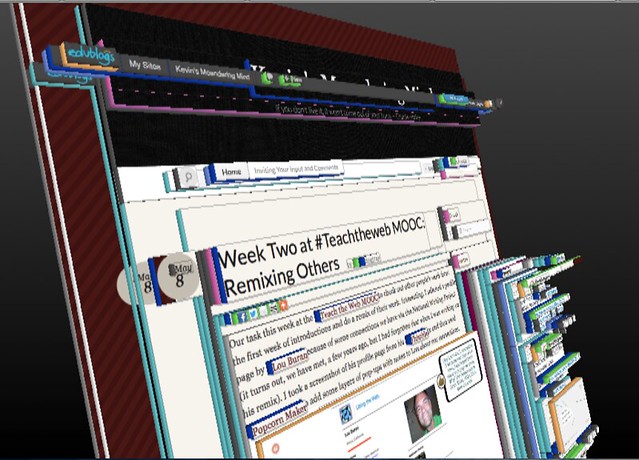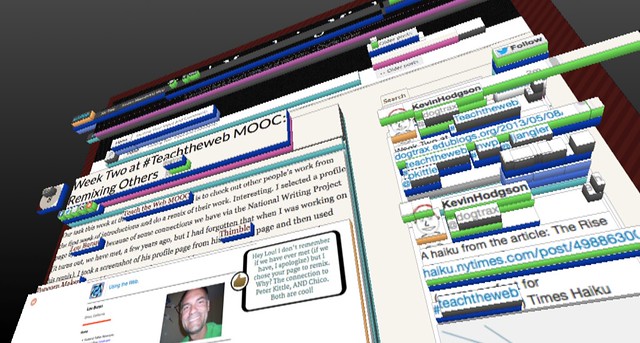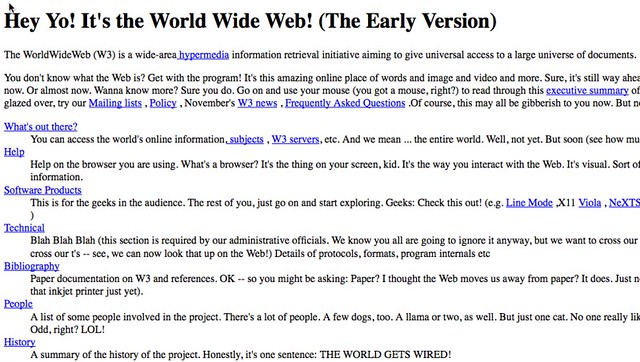I’ve been trying to think about the act of “remixing” this week, mostly as a result of the activities over at the Teach the Web MOOC. My friend, Chad, shared this fantastic Ignite Talk video from Nishant Shah, who delves into the validation of remixing and how the act of remixing balances the art of creation, recreation and authenticity of the original work even while creating something new. Over at the MOOC, folks have been taking each other’s work and remixing it in different ways, so Nishant Shah’s presentation resonated with me.
I’m still struck by the question of whether most folks who publish original content are OK with remixing of their work by others. I’m not losing sleep over it or anything but still … the easy ability to take someone’s video or music or art, and recast it (either in a positive or negative light) with technology hints at the larger question of “ownership” in the digital age. Do we assume that anything we publish online is fair game for remix? It’s a fascinating topic, I think. (I am sure that somewhere, lawyers are getting paid a few thousand dollars an hour to argue about it).
See what Chad did to me, for example. I found it amusing, and insightful, but I admit to wondering when I first clicked the play button: what’s he done with my words and video and twitter feed? What if, instead of using my own blog post words, he put a political diatribe in there, against my political views (such as advocating federal support for the NRA or something)? What if the words coming out of my mouth were not my own? In that case, instead of being amused by the remix, I’d be angry at what he had done. But so what? The remix would have been published, distributed and out of my control at that point. Would my only recourse be another remix? (or hiring one of those lawyers?)
But I do know that I have students who do mash-ups of videos, and remix music that they like, and they don’t even think about ownership issues when doing so. They are only thinking that they want to remake the original of something into something new. THAT is the remix thought process for a lot of young people.
Peace (in the mixing),
Kevin




